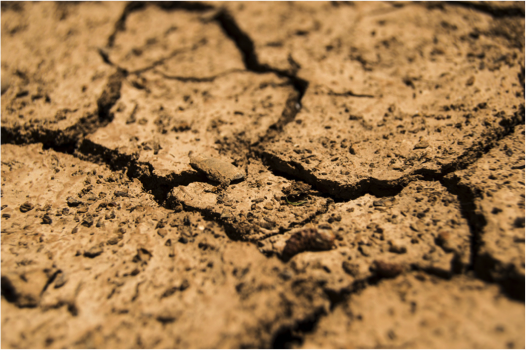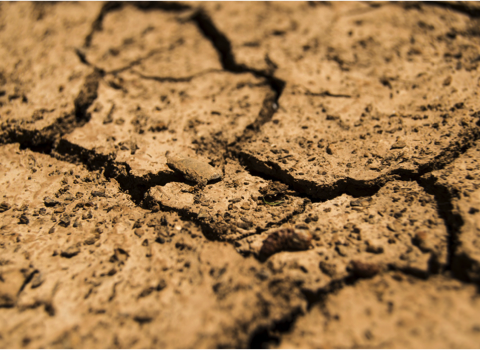 Ground enhancement materials (GEM) exist to solve the toughest grounding problems. To finalize the dissipation of a lightning current safely into the earth, high conductivity ground must be present. Without such material, certain types of earth or particular seasons may leave your personnel and products in harm’s way.
Ground enhancement materials (GEM) exist to solve the toughest grounding problems. To finalize the dissipation of a lightning current safely into the earth, high conductivity ground must be present. Without such material, certain types of earth or particular seasons may leave your personnel and products in harm’s way.
Read on to learn more about GEM and the four most important qualities needed to make it effective.
What Are GEM and What Are Their Purpose?
The goal of GEM is to lower grounding electrode system resistance. For areas with high soil resistivity, such as rocky or sandy soil, or on sites where ground rod electrodes cannot be driven to the desired depth, GEM are critical to grounding effectiveness.
Earth resistivity varies with the type of soil, mineral content and compactness, and also with moisture content and temperature. Seasonal changes may thus alter where GEM is needed.
Also called “earthing” enhancement materials, GEM are high conductivity materials that can be made from a variety of compounds. Bentonite clay, for example, is a naturally occurring compound sometimes used. Commercially available forms include powders, pellets and gels.
Concrete mixtures are another option, and are valuable because they prevent leaching, which is one of the important characteristics of effective GEM you will read about below.
The Four Most Important Qualities of GEM
Although GEM have been in use for decades, the International Electrotechnical Commission (IEC) published the first standards for ground enhancement materials in 2011. The IEC 62561 series of standards covers components across lightning protection systems, and is the only standards body that has detailed information on prequalification of GEM.
The tests required in the standard include leaching, sulfur content, resistivity and corrosion.
1. Leaching Resistance
One requirement for earthing enhancement materials is that they must be chemically and physically stable. Specifically, they must be chemically inert to the surrounding soil and must not leach over time.
Resistance to leaching is a quality of proper GEM because leaching compromises the material’s lifetime value. Regardless of the material used, GEM that is washed away cannot uphold the superior conductivity it was intended to provide.
Testing: Conformance is verified by testing in accordance to EN 12457-2 “Characterization of Waste – Leaching – Compliance Test for Leaching of Granular Waste Materials and Sludges – Part 2” and EN 12506 “Characterization of Waste – Analysis of Eluates – Determination of pH, As, Ba, Cd, Cl-, Co, Cr, Cr VI, Cu, Mo, Ni, NO2-, Pb, total S, SO42-, V and Zn.”
2. Minimum Sulfur Content
A significant amount of sulfur cannot exist in the GEM for the system to be effective. If an earthing enhancement material contains a significant amount of sulfur, it can corrode the ground rod electrode.
The ground rod electrode enables the lightning current originally captured by the air termination system to be eventually transferred and dissipated into the low-impedance ground.
Sulfur corrodes zinc, copper, lead and iron—all of which are commonly used metals in ground rods. Even stainless steel is not completely immune to corrosion when placed in moist earth underground for an extended period.
Testing: IEC 62561-7 requires that any earthing enhancement material contain less than 2% sulfur. Conformance to this requirement is verified by testing to ISO 14869-1 “Soil quality – Dissolution for the Determination of Total Element Content — Part 1: Dissolution with Hydrofluoric and Perchloric Acids.”
3. Low Resistivity
The installation of GEM involves replacing high resistivity soil that is close to the electrode with low resistivity backfill material. The earth closest to the electrode has the biggest impact— a three-foot radius from the rod or electrode comprises 70% of the overall system resistance, so replacing it with a greater than 20 ohm-cm material will have a large impact on the overall grounding system impedance.
Resistivity should be low, and that quality should continue through the life of the substance.
>>>Related Read: How Grounding System Helped Gold Mine Overcome Rocky Soil Conditions.
Although the IEC does not require a minimum resistivity value for earthing enhancement materials, it does prescribe that all manufacturers of GEM test the resistivity in accordance to ASTM G57 “Standard Test Method for Field Measurement of Soil Resistivity Using the Wenner Four-Electrode Method.”
Testing: The sample box used for testing can be a commercially available four-electrode soil box, or one constructed of an inert non-conductive material with four mild or stainless steel electrodes. The measurements can be made by using a commercially available soil resistance meter, or by using a low-frequency AC source with a high impedance voltmeter and ammeter. The tested resistivity value of the earthing enhancement compound must be clearly marked on the package, product data sheets, or installation instructions.
4. Not Corrosive With the Earthing Electrode (Ground Rod)
Naturally, a requirement of the material used to lower resistivity must be that it is not corrosive to the earthing electrode. The pH of the material can be used as an indicator of a compounds’ corrosiveness, but corrosion rate cannot be quantified by pH alone.
Corrosion standards are dependent on the ground rod used in the application. The Linear Polarization Method can be employed to determine whether or not an earthing enhancement compound is corrosive to a grounding electrode. Based on studies, different equations exist to help determine allowable polarization resistance for use with copper, steel and zinc.
To learn about the Polarization Resistance Method applied to GEM, or to enhance your overall knowledge of these important compounds, check out our Ground Enhancement Material Guide.
Photo credit: Pexels

